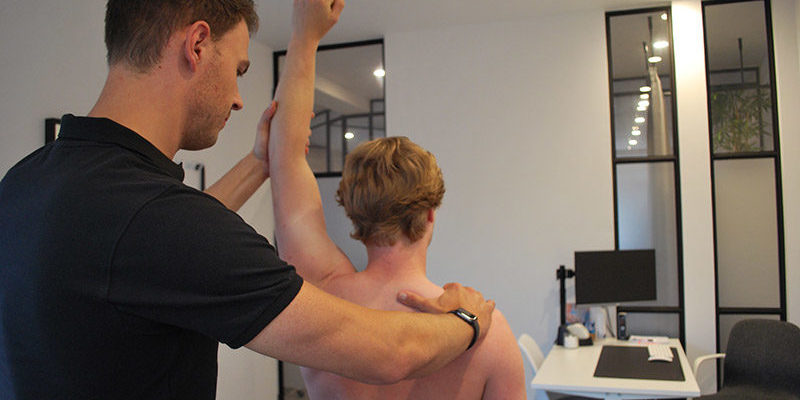Shoulder pain is annoying. Everyday movements like lifting groceries, grabbing something from a cupboard or waving at someone is then a challenge. If the pain in the shoulder gets worse and worse, you may be developing a frozen shoulder. This will increasingly restrict your range of motion. Recovery from a frozen shoulder can take up to 1 to 3 years. But what exactly is a frozen shoulder, how does it develop, but more importantly, how do you get rid of it? In this blog, we answer some questions about frozen shoulder.
What is a frozen shoulder?
A frozen shoulder, or 'frozen shoulder', is a long-term condition of the shoulder in which the joint capsule, which wraps around the head and socket of the shoulder like a band, becomes adherent. The joint capsule allows the movements of the shoulder to run smoothly. An adhesion of the joint capsule leads to stiffening (freezing) of the shoulder. Hence the term frozen shoulder.
How does one create it?
Sometimes the cause cannot be determined and sometimes a it arises after a fall, accident or surgery. Usually, an inflammatory reaction is the culprit. Stress can also be an important factor. If the following conditions exist, there is an increased risk of developing a frozen shoulder:
- Diabetes mellitus
- Thyroid disorders
- Epilepsy
- Dupuytren's disease
- Heart and lung diseases
- Parkinson's disease
What is striking is that frozen shoulder is more common in people aged between 40 and 65 and more common in women. It usually arises on the non-dominant side. A frozen shoulder is difficult to recognise at first and can vary in severity. It has several phases: the 'freezing phase', the 'frozen phase' and the 'thawing phase'.
The different phases
The freezing phase
This is the first phase. In this phase, the pain is increasing and the joint becomes less and less mobile. Reaching high, heavy lifting and even the smallest twisting movements can be painful. The area around the shoulder often becomes involved as well, and sometimes a radiation develops that moves towards the arm, neck or back. At this stage, people often tend to move more because stiff muscles or joints normally benefit from exercise. In the case of frozen shoulder, this is not the case. Moving too much, heavily or aggressively can actually force the shoulder. The freezing phase usually lasts from several weeks to 9 months.
The frozen phase
This is the second phase. In this phase, the pain in the shoulder often subsides, but the restriction of movement remains. The stiffness around the joint may still cause the neck, arm and back to remain painful because you will move differently. During this phase, you may gradually start exercising again, under the guidance of a physiotherapist or manual therapist. This phase often lasts from 4 to 9 months.
The thawing phase
This is the third and final phase. In this phase, the pain decreases even more and the stiffness in the joint will slowly disappear. During this phase, it is wise to resume sports and functional training to make sure you are back to normal as soon as possible. This phase has a duration of 4 to 12 months.
Why is physiotherapy important in frozen shoulder?
A frozen shoulder involves a long recovery process, which can be accelerated by supervised exercise, together with a physiotherapist or manual therapist. Without proper guidance and adjustment of normal lifestyle, recovery can sometimes take up to 3 years. All the more reason to contact your physiotherapist or GP.
Do you have shoulder complaints, want to know if your shoulder pain could be a frozen shoulder or have other questions about this condition?
Then take contact at FriskFysio, 085-5000333 or info@friskfysio.nl for more information.







